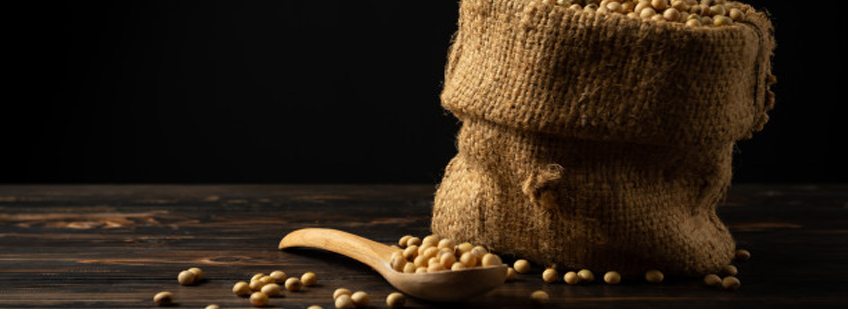10 Mar 2021
Vitawatch: agri-food intelligence round-up for March

Plants that naturally have fewer allergens… Changes in gut flora as an early sign of type 2 diabetes… Ideas for reducing food waste in the home or for improving healthy eating… A new process for measuring the antioxidant capacity of foods… Rapeseed as the protein of the future... A "miracle" cure for bacterial plant infections...
Throughout the world, from the USA to Japan, scientists in the fields of health and nutrition, food behaviours, and agriculture are providing us with glimpses of their latest discoveries.
Read the spring 2021 edition of VitaWatch, our scientific intelligence bulletin for the agri-food sector.
Diet and health
Plants that are naturally allergen free
In order to fight against food allergies and their consequences (health risks, and related costs etc.), one of the solutions being studied is to return to the source of the problem, in other words the plants that carry the allergen. Eliot Herman, a member of the Crop Science Society of America, is focusing his research on soy, as a ubiquitous ingredient in many food products in a number of forms (oil, lecithin, protein etc.), and that can be the cause of allergic reactions, in particular among children and infants.
After a number of years of research, Eliot Herman has developed a range of soy that is naturally allergen free. This is of interest as this soy is not genetically modified and thus is in line with consumer expectations. “This new soybean is intended to be a low-allergen prototype to be tested as a conventional, non-GMO line to mitigate the allergic response for consumers,” explains Elliot Herman.
Source: American Society of Agronomy
Advance prediction of type 2 diabetes thanks to microbiota screening
A team of scientists from ZIEL (Institute for Food & Health of the Technical University of Munich) has carried out a study of the link between gut microbiota and diabetes. Carried out on a cohort of 4000 subjects, this study was able to identify that a lower level of variations in gut bacteria were an indicator in the subjects that later developed type 2 diabetes, compared to those that did not develop the disease.
“When certain gut bacteria do not follow a day-night rhythm, so if their number and function does not change over the course of the day, this can be an indicator for a potential type 2 diabetes disease. Knowing this can improve diagnosis and outlook of type 2 diabetes,” said Chronobiologist Dr. Silke Kiessling, another contributor to the study.
This discovery supports a theory that changes in the microbiome can impact nutrition-related diseases and can serve as a tool in screening for prevention purposes. The way that gut bacteria changes, or not, during the day can also effect other microbiome-related diseases such as Crohn’s or cancer.
Source: https://www.tum.de/nc/en/about-tum/news/press-releases/details/36118/
Formulation / processes
Rapeseed. The protein of the future?
Soy protein represents around 95% of all plant-based protein currently cultivated throughout the world, and is known for a number of benefits (it contains all 9 essential amino acids, it is cholesterol free and contains little fat). However, another contender is threatening soy’s hegemony on plant protein – rapeseed.
Researchers at the Martin Luther University Halle-Wittenberg (MLU) in Germany have identified a number of benefits that rapeseed can present as a protein crop. Previous studies have shown that the amino acid profile of rapeseed is similar to that of soy. Research carried out by the MLU team has determined that the effects of rapeseed protein on the metabolism are indeed comparable to soy protein in terms of its effects on metabolic parameters and cardiovascular risk factors. “ Rapeseed even produced a slightly more beneficial insulin response in the body," says nutritionist Christin Volk from MLU.
However, rapeseed protein has a mustardy taste and is currently limited to non-sweet applications. The molecule kaempferol 3-0 is primarily responsible for the bitter taste, that could limit its uses and is the focus of studies aiming to limit off flavours.
Source: https://www.sciencedaily.com/releases/2020/09/200930110124.htm
Consumer behaviours
Why do consumers think that attractive food is better for their health?
A research team at the University of South Carolina (USA) is studying how the aesthetics of food can influence consumers regarding the perceived benefits of a dish.
In a series of experiments, the scientists tested whether the same food would be perceived as healthier if it was “prettier”, according to classical principals of aesthetics (symmetry, order and systematic patterns). One of the experiments consisted of presenting avocado toasts to two groups of consumers: the first group had “pretty” toasts, while the second group had badly presented toasts. Despite identical information provided on the foods, the subjects evaluated that the avocado toast was overall healthier (more nutritious, fewer calories) and more natural (less processed) if they saw a more aesthetically pleasing version. The aesthetics therefore had a consequence on the perceptions of naturalness, and these perceptions also led to a different perception in relation to the “healthiness” of the food. This was further confirmed by subjects of another experiment who were prepared to pay more for a beautiful bell pepper than for an “ugly” one, in particular as they regarded the beautiful one as being healthier.
The results of this study are of interest for marketing specialists, as well as public health experts. The scientists explain that "classical aesthetics may be a costless and subtle new way to convey naturalness and healthfulness - attributes that consumers increasingly demand in food products. At the same time, pretty food presentation may optimistically distort nutrition estimates and negatively impact dietary decisions. Given these findings, policy-makers may want to consider modification disclaimers as an intervention or strengthen regulations around providing objective nutrition information with food images."
Source : https://www.sciencedaily.com/releases/2020/11/201107133908.htm
A method for reducing food waste at home
The population of the USA discards the equivalent of 165 billion dollars of food each year. Scientists at the College of Health Solutions of Arizona State University are attempting to identify factors that can help to reduce food waste, in particular through the concept of “value”. “If you can show people how much they're wasting and what that means in terms of dollars and cents or lost opportunities for their kids to eat nutritious fruits and vegetables, then you have put value back in the food, and that could potentially drive down food waste," says Chris Wharton, assistant dean of innovation and strategic initiatives at Arizona State University's College of Health Solutions.
For 5 weeks, 53 families taking part in the study in the region of Phoenix, Arizona, received instructions to be displayed in the home. For example, on how to store foods, or how to decode use-by dates. They were also given access to educational material showing three values associated with food: monetary cost, health and environmental impact. At the end of each week, the participants weighed and recorded how much food waste they had accumulated by using transparent plastic bins.
The results of the study showed that food waste was reduced by 28% during the experiment, in particular due to the “visibility” of the thrown away food, thanks to the use of plastic bins and the process of weighing.
While the results are not statistically significant, the study provides a glimpse of the values that we associate with food and their influence on our behaviours. In the future, the team wishes to find out more about this subject in order to develop predictive models for improving future interventions.
Source: https://www.sciencedaily.com/releases/2020/10/201006114258.htm
Food safety
Development of a procedure to measure the antioxidant capacity of food
Antioxidants present in food play an important role in maintaining health and prevention of disease such as atherosclerosis, cancer or diminished immune function. While detecting the level of antioxidants in food is important, current methods are cumbersome and complex (separation, extraction and complex colorimetric analysis).
Researchers at the University of Kumamoto in Japan have developed a novel system able to rapidly and easily measure the antioxidant capacity of food. This new electrochemical system uses a gel form Bicontinuous Microemulsion (BME), a mixture of water and oil that do not normally mix, integrated with a sheet-type electrode.
"Our system can be used for quality control of meat, fish, vegetables, fruits, chocolate, cosmetics, and other products at production, manufacturing, and retail outlets," said Professor Kunitake, head of the research group at the University of Kumamoto. "If the analysis of food products becomes more accessible to producers and consumers, it could give added value to food products, help find the best cultivation conditions for production, and eventually become a criterion for judging whether food products are both tasty and safe to eat.”
Source: https://www.sciencedaily.com/releases/2020/11/201112100905.htm
Sustainable agriculture
Rice, kiwi and citrus crops can now be protected from bacterial infections thanks to plant-inspired alkaloids
Some bacterial infections that attack plants are very hard to treat and may not even have any effective preventative or curative measures. This is the case for rice leaf blight, kiwifruit canker and citrus canker. In an article published in the Journal of Agricultural and Food Chemistry of the Americain Chemical Society, a team of scientists claim to have found a highly promising remedy in the form of plant compounds called tetrahydro-β-carboline (THC) alkaloids.
These compounds are known are known to have antitumor, anti-inflammatory, antifungal, antioxidant and antiviral activities. By using a THC alkaloid called eleagnine (found in Russian olive trees) and by adding different chemical groups, the scientists obtained two new compounds able to prevent and treat bacterial infections on the leaves of rice, kiwi and citrus.
Source: Journal of Agricultural and Food Chemistry




 Home
Home

















Share your opinion